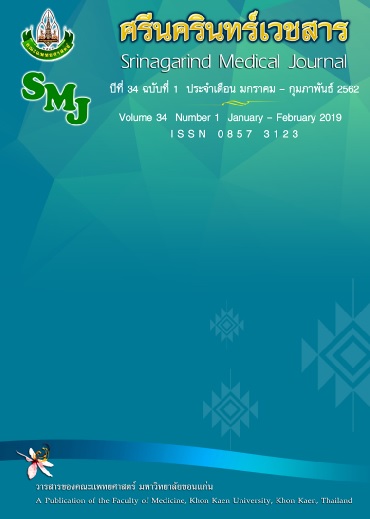Knowledge Status of Medical Education in Thailand: A Research Based Study
Keywords:
Knowledge Status; Medical Education; Research; Knowledge; Medical Education DatabaseAbstract
Background and objective: Due to the diversity of knowledge scope in medical education in Thailand, there is no clear to be categoried. Therefor, the knowledge of medical education have lives in gray area and no clear scope. This study aimed to study knowledge status of medical education in Thailand and purpered medical education trends for the future.
Method: Descriptive research was used and research papers were collected from “Thai Medical Education Database” from 2000 to 2017. Then research papers were context analysis and presented with descriptive statistic and descriptive analysis.
Result: From 988 published articles the knowledge status of medical education in Thailand could be categorizrd into 8 groups (1) Instructional development has 428 articles (43.32 %), (2) Learning measurement and evaluation has 322 articles (33.60 %), (3) Quality of medical student’s life has 100 articles (10.12 %), (4) Management, educational standards development and medical students activity has 71 articles (7.19 %), (5) Innovation for education has 32 articles (3.23%), (6) Community hospital and medical education has 14 articles(1.42%), (7) Research methodology on medical education has 6 articles (0.61%) and (8) Retention in bureaucracy of mediacal students has 5 articles (0.51%) While medical education trends for the future has 4 topics; namely (1) Tool innovation for instruction, (2) Simulations room and medical education, (3) Enhancing the experience of being a doctor in a community hospital. and (4) Developing a curriculum that responds to social change.
Conclusion: This study will complement the grounded of medical education in Thailand to be strengthened and stakeholder will understand more about the role of medical education. It can produce research that is consistent with the changes of globalization and society.
References
2. วัลลี สัตยาศัย. แพทยศาสตรศึกษาคืออะไร. ธรรมศาสตร์เวชสาร 2556;13: 8-9.
3. Lateef F. Simulation-based learning: Just like the real thing. J Emerg Trauma Shock 2010; 3: 348-52.
4. Neeley SM, Clyne B, Resnick-Ault D. The state of leadership education in US medical schools: results of a national survey. Med Educ Online 2017; 22: 1-4.
5. Jeffries WB, Huggett KN, editors. An introduction to medical teaching. London: Springer, 2010.
6. Walsh K, editors. Oxford textbook of medical education. Oxford: Oxford university press, 2013.
7. Rizwan M, Rosson NJ, Tackett S, Hassoun HT. Opportunities and challenges in the current era of global medical education. IJME 2018; 9: 111-12.
8. Crone RK, Samaan JS. The globalization of medical education. Innovations in Global Medical and Health Education 2013; 2: 1-5.
9. Norman G. Medical education: past, present and future. Perspect Med Educ 2012; 1: 6-14.
10. Maniate JM. Trends and opportunities in medical education: Aligning to societal needs and expectations. Archives of Medicine and Health Sciences 2017; 5: 154-56.
11. ศุภวรรณ สัจจพิบูล. แนวคิดการนิเทศเพื่อพัฒนาสมรรถนะการจัดการเรียนรู้ในศตวรรษที่ 21. วารสาร มหาวิทยาลัยศิลปากร 2560; 37: 203-22.




